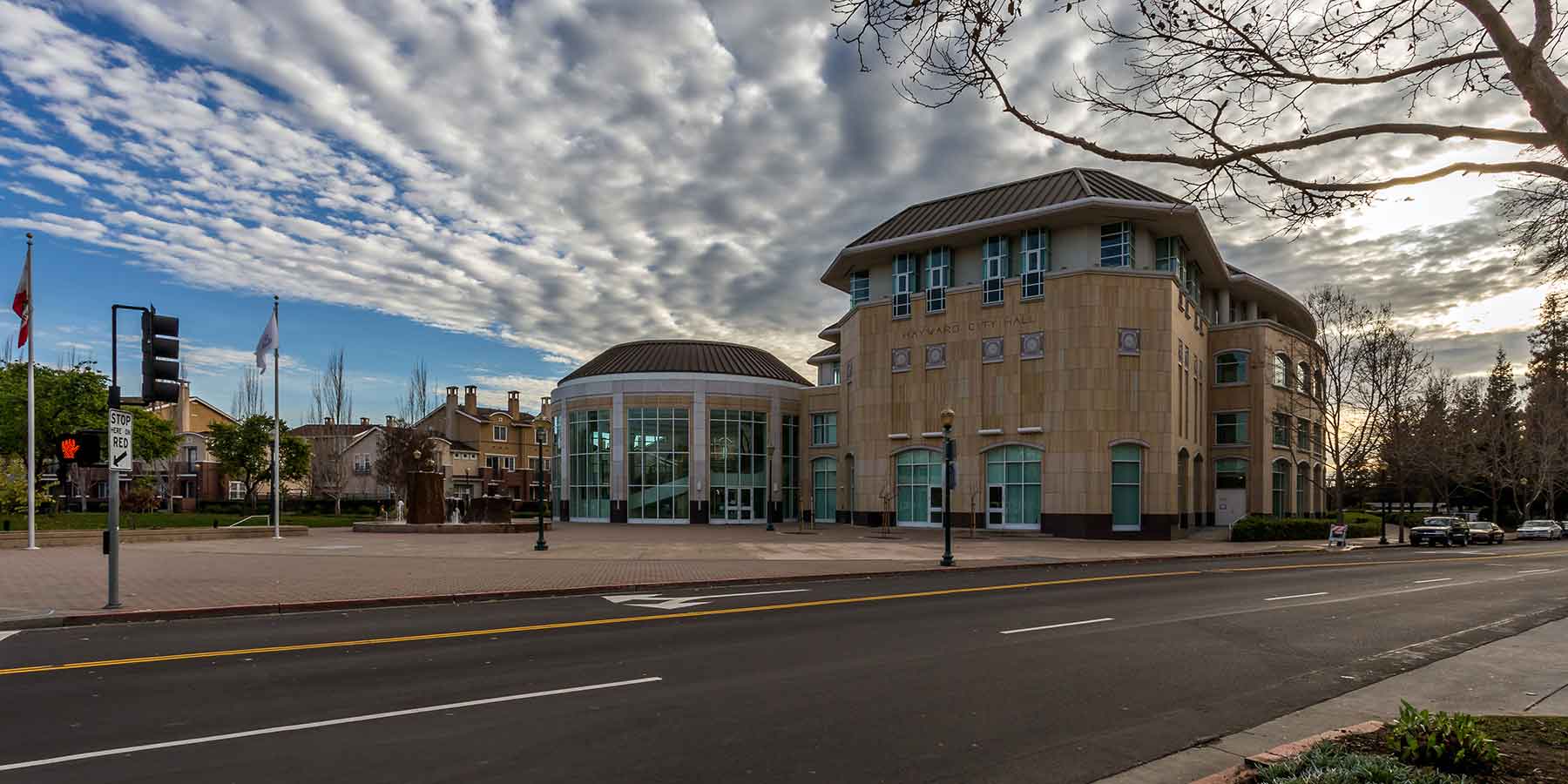Traffic Impact Fee (TIF) Frequently Asked Questions
For more information, visit the Traffic Impact Fee (TIF) project page.
Frequently Asked Questions
What is a traffic impact fee?
A traffic impact fee (TIF) is a one-time fee imposed on certain development projects to mitigate city-wide cumulative transportation impacts of development growth.
When did the TIF go into effect?
The TIF was adopted by the Hayward City Council on May 24, 2022 and it became effective on July 24, 2022. The adopted resolution can be found on the City's Legistar website. The adopted TIF Ordinance (Chapter 10, Article 30) can be found in the City's Municipal Code.
My application was deemed complete prior to July 24, 2022. Am I subjet to the TIF?
No. All applications that were deemed complete by the City's Planning Division prior to July 24, 2022, will not be subject to the TIF.
Which developments are subject to the TIF?
Currently, new development applications featuring the following land uses are subject to the TIF:
Single family residence (SFR), defined as a detached unit where no more than one unit exists on a parcel. A couplet or zero lot line dwelling unit where no more than one vertical wall is shared, and each couplet/zero lot line dwelling is located on its own parcel.
Multi-family Residential, defined as residential uses where more than one unit exists on a parcel, whether attached or detached. This may include duplexes, triplexes, four-plexes, condominiums and apartments with five or more units..
Townhome, defined as a building, group of buildings, or portion there of which includes two or more attached dwelling units, and for which there is a final map or parcel map.
General Industrial, defined as an industrial or related facilities, typically characterized by a mix of manufacturing, service, or warehouse services.
Distribution or e-commerce, defined as building(s) used primarily for the storage and/or consolidation of manufactured goods (and to a lesser extent, raw materials) prior to their distribution to retail locations, other warehouses, customers, or elsewhere.
Office, defined as any building or location where affairs of business, commercial or industrial organizations, or professional persons or firms are conducted, or any land use defined as an office under the City’s Municipal Code, including but not limited to data processing and data centers. Please reference Hayward Municipal Code Section 10-1.3510 Uses and Activities Defined for additional information.
Retail, defined as land used for provision of goods and services/ This category is for general sales and services that comprise most establishments typically associated with commercial land use. This includes, but is not limited to, retail stores, restaurants/bars, movie theaters.
Which developments are exempted from the TIF?
Currently, the following land uses are not subject to the TIF:
Public Buildings and Facilities: Publicly owned facilities meant to serve the community that are owned or operated by a federal, state, municipal or governmental agency or district.
Affordable Housing Units: As defined and required by the Hayward Affordable Housing Ordinance (Chapter 10, Article 17 of the Hayward Municipal Code) or any affordable units otherwise restricted for a minimum of 30 years by a governmental agency pursuant to state or federal law.
Accessory Dwelling Units (ADU), Residential re-models/additions: No TIF is applicable for remodeling, adding to an existing residential unit, or adding an Accessory Dwelling Unit (ADU) for residential development.
My project changes or adds onto an existing site, am I subject to additional TIF fees?
Generally, if a project changes land use types or makes additions to existing sites where land uses are subject to TIF, an additional TIF fee will be assessed. The TIF fee is calculated based on the difference between the amount for the new use and the amount previously paid for the last legal use of the site. If the TIF fee for the new use is less than the previous use, no refund will be issued for the difference, however no additional TIF will be assessed.
How are TIF fees calculated?
For residential projects, the TIF is determined by the number of units: TIF = (Number of Units) x (Fee per Unit)
For non-residential projects, the TIF is determined by thousand square feet (KSF): TIF = (KSF) x (Fee per KSF)
Applications are subject to the per-unit or per-KSF rate in effect at the time the application is deemed complete. The TIF is included in the yearly Master Fee Schedule, which can be found here.
What if my project is mixed-use and has more than one of the land uses that are subject to TIF?
If a project features more than one land use, the TIF for each use is calculated individually based on the TIF calculations in #7 above.
How will I be notified of the TIF?
Applicants will receive an email with a copy of the TIF invoice, which is due prior the final inspection or issuance of a certificate of occupancy, whichever occurs first.
Where do the fees go?
The Department of Public Works & Utilities - Transportation Division will collect the fees prior to the date of final inspection or certificate of occupancy, whichever comes first. The fees will be deposited into a special transportation fund specifically designed to fund traffic mitigation projects.
How are the collected fees going to be used?
The collected fees will be used for city-wide traffic and transportation projects as found in the TIF Nexus Study, which can be found here.
When and how do I pay the TIF?
The TIF needs to be paid prior to the final inspection or issuance of the certificate of occupancy, whichever occurs first. Payments can be made in person or via check. Please include the application/permit number and invoice number on checks.
To pay online, go to https://www.hayward-ca.gov/make-payment
Payments by check should be made to: City of Hayward - Public Works, Transportation Division. Please include the application/permit number and invoice number on checks.
Checks can be dropped off in person or mailed to: Hayward City Hall, 777 B St., Hayward, CA 94541.
How does the TIF effect CEQA review, impacts and mitigations?
The TIF fee is separate from the CEQA and Environmental Review process which is set by State law. Projects will continue to be subject to CEQA and all required environmental review processes, including transportation mitigation requirements, regardless of whether the project is subject to the TIF.
How does the TIF effect site plan review and frontage improvement requirements?
TIF fees are meant to offset project impacts to city-wide, cumulative transportation impacts as identified in the TIF Nexus Study. TIF fees generally do not cover frontage improvements or on and off-site deficiencies that are identified during Site Plan Review. It is the applicant's responsibility to make frontage and/or on/off-site transportation improvements to address any transportation-related deficiencies identified during the site plan review process regardless or whether the project is subject to the TIF.
Does paying a TIF mean that I do not need to prepare a Traffic Impact Analysis or Local Transportation Assessment?
No. The City has made an effort to streamline and simplify the Traffic Impact Analysis process with the implementation of the TIF. Many of the requirements that were in place prior to the TIF have been reduced or eliminated. However, as TIF fees only cover cumulative mitigation for those city-wide projects found in the TIF Nexus Study, preparation of a Traffic Impact Analysis, Local Transportation Assessment and additional transportation related improvements may still be required in accordance with the City's Traffic Impact Analysis Guidelines. A Traffic Impact Analysis, Local Transportation Assessment may identify transportation deficiencies that are caused by the project but not covered by the TIF fee. Such improvements may include but are not limited to:
- Intersection or multi-modal improvements at locations within or near the project site that are not identified in the TIF Nexus Study, but otherwise impacted by the project
- Design and installation of Site Access improvements such as traffic signals, turn lanes, bicycle lanes, sidewalks, access or new driveway(s) or roads
- Site circulation improvements to address transportation operations, safety, visibility queuing, etc.
- Neighborhood Traffic Impacts and Traffic Calming Improvements
-Parking and on-street/off-site parking demand
It is the applicant's responsibility to make improvements to address any transportation-related deficiencies identified during the Traffic Impact Analysis, Local Transportation Assessment process regardless of whether the project is subject to the TIF.
If a Traffic Impact Analysis, Local Transportation Assessment is required of your project, City staff will provide further instruction and details upon review of either your Conceptual Design plans or first Application submittal.
Can I appeal the fee?
An applicant can file a notice of appeal with the City Clerk's Office within fifteen (15) days of receiving the fee notice. The City Clerk will fix a time and place and place for an appeal hearing.
Can I get a refund?
An applicant can submit a written request to the Department of Public Works & Utilities for a refund if a building permit expires, is canceled, or is voided and any fees paid have not been expanded, no construction has taken place, and the use has never occupied the site. The Director of Public Works can order the return of the fee, less administrative costs. City Council will adopt a resolution authorizing the refund.
Who do I contact for more information?
Questions can be directed to tif@hayward-ca.gov








